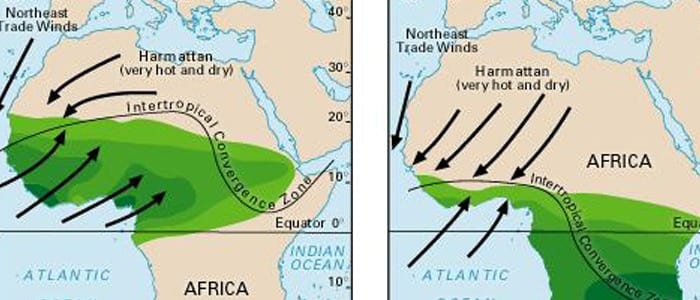A strong low-pressure system off western Africa has kicked up a surge of Saharan Dust that is traveling across the Atlantic Ocean. The first surge of dust is forecast to move across T&T this weekend, ending 2022, with another surge of dust arriving next weekend.
What you need to know
— Saharan Dust Surges: A surge of Saharan Dust is forecast to move across the Lesser Antilles, including Trinidad and Tobago, from Saturday, December 31st, 2022. This surge will linger through next week, with another surge forecast to arrive by next weekend across the region.
— Impacts: Through the next seven to ten days, air quality levels across Trinidad and Tobago are forecast to be between good and moderate. Due to anticipated New Year’s Eve fireworks, air quality could briefly become unhealthy for sensitive groups.
— What Should You Do: Sensitive groups may need to take the necessary precautions, particularly during high-traffic periods. The general population will remain unaffected.
Current AQI Levels Across T&T
Though all official air quality monitoring stations from the Environmental Management Agency (EMA) are not reporting data at this time, unofficial stations across the country generally show good air quality though mild concentrations of dust remain present.
These measurements are based on PM2.5 (particulates the size of 2.5 micrometers and smaller, usually associated with increases in Saharan Dust, vehicle exhaust, and smoke) and PM10 particulates.
Over the last 24 hours, visibility remained unaffected by Saharan Dust at the Piarco International Airport and the A.N.R. Robinson International Airport at Crown Point, Tobago.
Saharan Dust Forecast

Next Surge: Saturday, December 31st, 2022
A mild to moderate concentration surge of dust is forecast to move across Trinidad, Tobago, and the remainder of the Lesser Antilles from Saturday, December 31st, 2022. Fluctuating concentrations are forecast through January 6th, 2023, with a secondary peak between January 1st and 2nd, 2023.
Air quality levels will fluctuate between good and moderate. Due to anticipated New Year’s Eve fireworks, air quality could briefly become unhealthy for sensitive groups. However, elevated low-level winds will quickly push air pollution westwards.
Surge #2: Saturday, January 7th, 2023
Another Saharan Dust surge is forecast to move across the Lesser Antilles, including Trinidad and Tobago, from late Friday, January 6th, 2023, through Saturday, January 7th, 2023, and linger into the subsequent week. Air quality levels will fluctuate between good and moderate.
What does this mean for you?


The air quality is forecast to be lowered primarily during high traffic periods, particularly between 6:00 AM and 9:00 AM and again from 3:00 PM through 6:30 PM.
The surges of dust during this time of year are due to the Harmattan, a season in the West African subcontinent that occurs between the end of November and the middle of March. During this season, a predominant northeasterly trade wind (dubbed the Harmattan Winds) blows from the Sahara Desert over Western Africa into the Gulf of Guinea.

During this period, a ridge of high pressure stays over the central Sahara Desert, and the Intertropical Convergence Zone (ITCZ) remains over the Gulf of Guinea. The Harmattan wind accelerates when it blows across the mountain massifs of Northwest Africa. If its speed is high enough and it blows over dust source regions, it lifts the dust and disperses it.
Dust that makes it into the upper levels of the atmosphere can then get transported across the Atlantic Ocean and affect the Eastern Caribbean. These Saharan Dust outbreaks tend to be milder in the Eastern Caribbean than the dust outbreaks associated with West African thunderstorms driving dust into the upper atmosphere from April through November.











